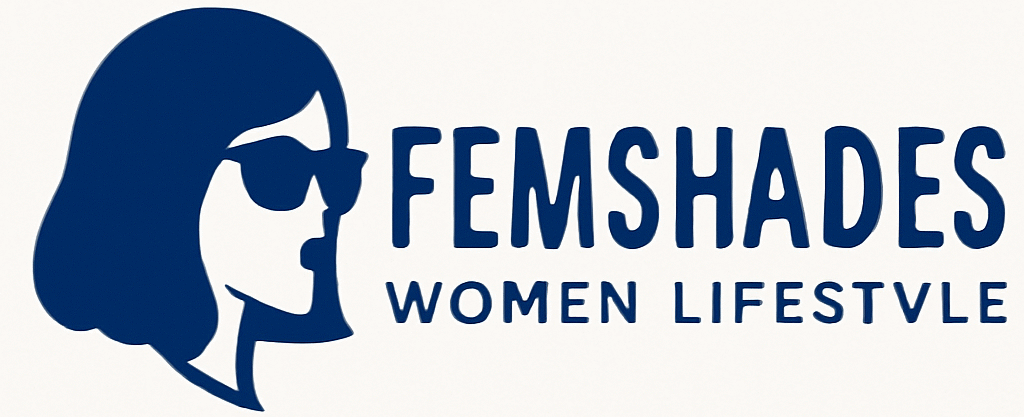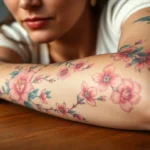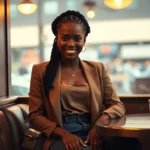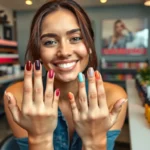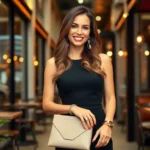Landing your dream job starts before you even speak a word. We’ve all heard the saying “dress for the job you want” and there’s solid truth behind it. Your interview outfit creates that crucial first impression that can make or break your chances of success.
We understand the pressure of choosing the perfect interview attire. With so many variables to consider – company culture, industry standards, and personal style – it’s easy to feel overwhelmed. The wrong outfit choice could cost you the opportunity while the right one opens doors.
That’s why we’ve created this comprehensive guide to interview dressing. We’ll walk you through everything from classic business professional looks to modern smart-casual approaches. Whether you’re interviewing at a traditional law firm or a trendy startup, we’ll help you strike the perfect balance between professionalism and authenticity that’ll have employers remembering you for all the right reasons.
Understanding the Importance of First Impressions in Job Interviews
Research shows that hiring managers form opinions about candidates within the first 7 seconds of meeting them. We can’t overstate how critical these initial moments are for your career prospects. Visual cues contribute to 55% of all communication according to behavioral psychology studies, making your interview outfit a powerful tool in your professional arsenal.
Successful candidates understand that appropriate attire signals respect for the company and the interview process. Your clothing choices communicate professionalism, attention to detail, and cultural awareness before you even speak. Employers often interpret well chosen interview outfits as indicators of job performance and workplace fit.
| First Impression Factor | Impact on Hiring Decision | Time to Form Opinion |
|---|---|---|
| Overall appearance | 65% influence | 7 seconds |
| Clothing appropriateness | 42% influence | 15 seconds |
| Grooming standards | 38% influence | 10 seconds |
| Color coordination | 28% influence | 12 seconds |
Confidence levels increase dramatically when candidates feel appropriately dressed for their interviews. We’ve observed that properly attired applicants demonstrate better posture, maintain stronger eye contact, and speak with greater authority. This psychological boost translates directly into improved interview performance and higher success rates.
Company culture assessment becomes easier when you dress strategically for interviews. Traditional corporate environments still expect formal business attire, while tech startups might prefer smart casual approaches. Banking and legal firms typically require conservative styling, whereas creative industries often welcome more expressive fashion choices.
Memorable candidates balance professional standards with authentic personal style during interviews. Your outfit should enhance your qualifications rather than distract from your skills and experience. Striking this balance requires understanding both industry expectations and individual company preferences through thorough research and preparation.
Researching Company Culture and Dress Code Expectations

Before we step into our interview, we need to decode the company’s dress culture to ensure our outfit aligns perfectly with their professional standards.
Identifying Corporate vs. Casual Work Environments
Corporate environments demand traditional business formal attire that projects authority and professionalism. We’ll need dark-colored suits, customized dresses with matching jackets, crisp button-down shirts, and closed-toe dress shoes to meet these formal standards. Men should include ties as a requirement, while everyone should choose classic, non-bold jewelry to complete the polished look.
Business casual settings offer more flexibility while maintaining professional standards suitable for most office jobs. Our outfit choices expand to include dress pants or skirts paired with button-down shirts, blouses, cardigans, or blazers. Closed-toe shoes like loafers or moderate heels work perfectly, and we can make belts and ties optional accessories that remain conservative in style.
Casual work environments with relaxed dress codes welcome smart casual combinations that balance comfort with professionalism. Dark jeans or dress pants paired with blouses, polos, knee-length skirts, or dresses create appropriate looks. Clean closed-toe shoes complete these outfits, while modest accessories should complement rather than overpower our overall appearance.
Checking Company Social Media and Website for Visual Cues
Company social media platforms provide valuable visual insights into daily dress norms through authentic employee photos. We can examine LinkedIn profiles, Instagram posts, and company website galleries to observe how current employees dress during work hours and company events. These platforms reveal the practical reality of workplace attire beyond written dress code policies.
Employee photos at company meetings, team building events, and office celebrations show us the actual dress culture in action. We’ll notice patterns in formality levels, color choices, and accessory preferences that help us calibrate our interview outfit appropriately.
Asking HR or Recruiters About Dress Code Guidelines
Direct communication with HR representatives or recruiters eliminates guesswork about appropriate interview attire. We can ask exact questions about dress code expectations, clarifying any ambiguities before making our final outfit decisions. This proactive approach demonstrates our attention to detail and respect for company standards.
Recruiters often provide practical recommendations based on their experience with the company’s hiring process and cultural preferences. They understand what makes candidates successful and can guide us toward outfit choices that align with the organization’s professional image.
Choosing the Right Colors for Your Interview Outfit
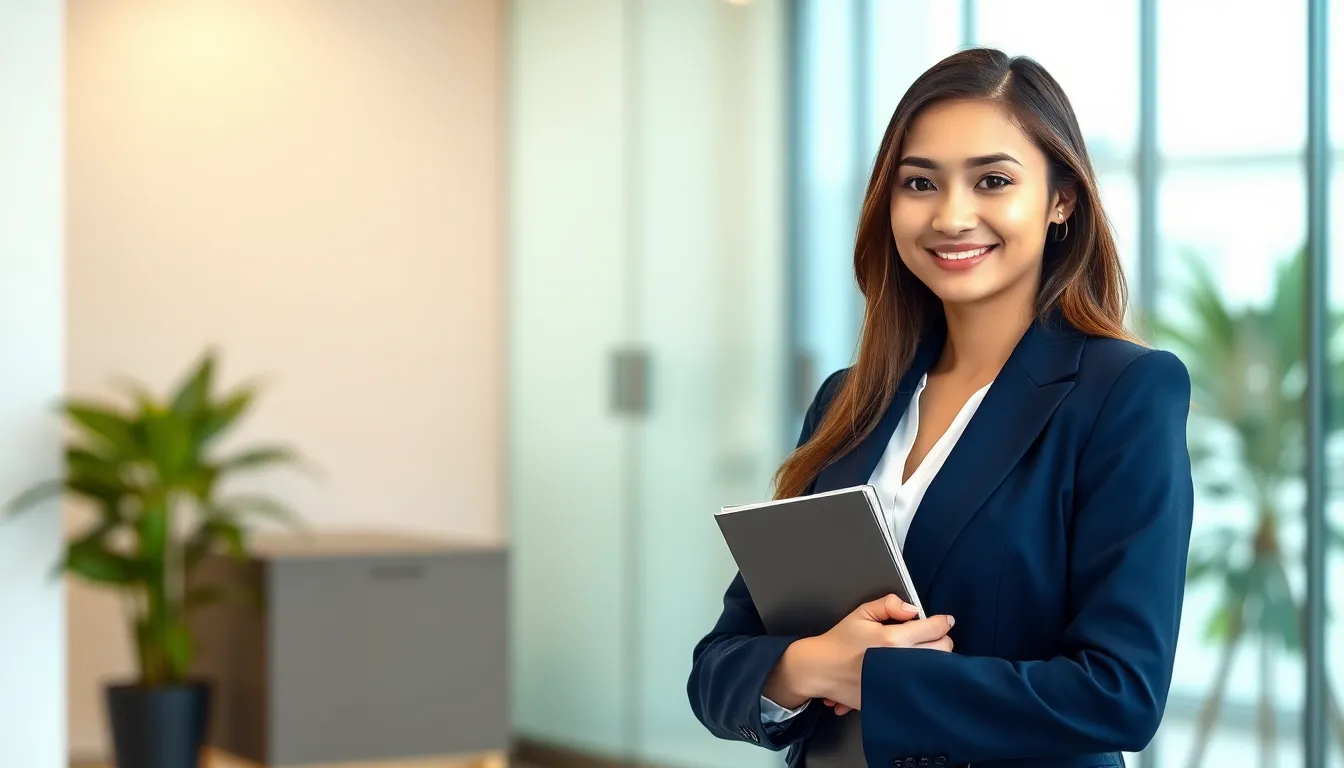
Color selection plays a fundamental role in creating a professional first impression that aligns with your researched company culture. Strategic color choices can enhance your credibility while ensuring the focus remains on your qualifications.
Selecting Professional Neutral Tones
Navy blue stands as the gold standard for interview attire because it conveys trust, confidence, and stability in professional settings. This versatile color works across all industries and pairs seamlessly with other professional pieces.
Black offers sophistication and authority but requires careful balance to avoid appearing overly intimidating. We recommend using black as an accent color rather than dominating your entire outfit.
Gray provides the perfect neutral balance that represents reliability and composure without being too stark. Charcoal gray suits work exceptionally well for formal interviews, while lighter grays suit business casual environments.
White delivers clean simplicity that brightens your appearance and creates a crisp, professional foundation. Crisp white shirts and blouses remain timeless choices that complement any neutral color palette.
Beige and tan colors add warmth to your professional appearance while maintaining the conservative approach most employers appreciate. These earth tones work particularly well in business casual settings.
Avoiding Distracting or Overly Bright Colors
Neon colors immediately distract interviewers from your qualifications and can appear unprofessional in traditional business environments. Bright oranges, electric blues, and fluorescent greens shift attention away from your skills and experience.
Bold patterns create visual chaos that competes with your verbal communication during the interview process. We suggest avoiding large florals, busy plaids, or geometric designs that draw the eye.
Flashy metallics and sparkles belong in social settings rather than professional interviews. These attention grabbing elements can signal poor judgment about appropriate workplace attire.
Creative industries may allow expressive colors but require careful research into company culture before incorporating brighter hues. Even in creative fields, we recommend keeping bold colors to small accents rather than statement pieces.
Understanding Color Psychology in Professional Settings
Navy blue psychology creates trust and dependability which explains why 73% of hiring managers view it favorably according to professional surveys. This color subconsciously communicates reliability and competence to decision makers.
Black color associations include authority and sophistication but can feel intimidating when overused throughout your outfit. Successful candidates use black strategically as accent pieces rather than head to toe statements.
Gray represents neutrality and balance making it an excellent choice for candidates who want to appear approachable yet professional. This color psychology helps create comfortable interview dynamics.
White conveys cleanliness and attention to detail which hiring managers interpret as organizational skills and professionalism. Fresh white pieces signal that you understand workplace presentation standards.
Muted tones keep focus on your qualifications rather than your clothing choices, which allows your skills and experience to take center stage during conversations. These subtle colors enhance rather than compete with your professional message.
Building a Professional Wardrobe for Men’s Interview Attire

Creating a comprehensive interview wardrobe requires strategic investment in quality pieces that project professionalism and confidence. We’ll guide you through the essential components that form the foundation of successful interview attire for men.
Essential Suit Components and Fit Guidelines
Structured shoulders form the backbone of your suit jacket, providing the foundation for a polished appearance. The jacket should contour naturally to your chest and waist without creating strain or pulling across the fabric. Proper shoulder fit cannot be altered, making this the most critical measurement when selecting your suit.
Trouser proportions demand equal attention to achieve the refined look employers expect. Your pants should sit comfortably at your natural waist with a slight break over your shoes, avoiding excessive bunching or pooling at the ankle. The break should create a gentle fold in the fabric without overwhelming your shoe silhouette.
Fabric selection significantly impacts both comfort and professional appearance throughout long interview days. Wool and wool blend materials offer the best combination of breathability, wrinkle resistance, and structured appearance. These fabrics maintain their shape while providing the flexibility needed for extended wear.
Color coordination plays a crucial role in creating versatile interview combinations. Navy, gray, and charcoal suits provide the neutral foundation that works across industries and company cultures. These colors pair effortlessly with various shirt and tie combinations while maintaining the conservative appearance most employers prefer.
Appropriate Shirt and Tie Combinations
Cotton dress shirts in white or light blue create the timeless foundation for professional interview attire. The collar should fit snugly without restricting movement, while cuffs should extend slightly beyond your jacket sleeves to frame your hands properly. High quality cotton maintains its crisp appearance throughout the interview process.
Subtle patterns like pinstripes or micro checks add visual interest without overwhelming your overall presentation. These refined details demonstrate attention to style while maintaining the conservative approach most interview situations require. Avoid bold colors or distracting patterns that shift focus from your qualifications.
Silk ties in solid colors or understated patterns complement your shirt and suit combination effectively. Navy, burgundy, or deep red ties convey professionalism while adding sophistication to your ensemble. The tie should reach your belt buckle and complement rather than compete with your overall color scheme.
Pattern mixing requires careful consideration to maintain professional balance. When combining patterned shirts with patterned ties, ensure one pattern remains significantly more subtle than the other. This approach creates visual interest while preserving the polished appearance employers expect.
Professional Shoe and Accessory Choices
Polished leather dress shoes in black or dark brown complete your professional foundation with sophisticated elegance. Oxford or derby styles provide the classic silhouette that works across all business environments. Regular polishing maintains the pristine appearance that signals attention to detail and personal care standards.
Belt coordination creates visual harmony by matching your leather accessories consistently. Your belt should complement your shoe color exactly, creating a cohesive look that demonstrates style awareness. Choose simple, classic buckles that enhance rather than distract from your overall presentation.
Minimal accessories enhance your professional image without creating unnecessary distractions. A classic watch adds sophistication while remaining understated enough to maintain focus on your qualifications. Avoid excessive jewelry or flashy elements that might detract from the professional impression you’re working to create.
Quality investment in these foundational pieces creates a versatile wardrobe that serves multiple interview opportunities. Well made accessories last longer and maintain their appearance better than budget alternatives. This approach ensures you’re always prepared to present your best professional self regardless of the interview timing or company culture.
Creating a Polished Look with Women’s Interview Clothing

Building on your understanding of company culture and color strategy, we’ll help you create a sophisticated interview wardrobe that projects confidence and professionalism.
Professional Suit Options and Alternatives
Classic suits remain your most reliable choice for conservative company interviews. A customized pant suit or skirt suit in black or navy blue paired with a light-colored blouse underneath creates an instantly professional appearance. Traditional colors like black, navy blue, gray, white, and beige communicate seriousness while subtle pastel tones such as light blue or pale pink can soften your overall look when appropriate.
Separates offer flexibility when full suits feel too formal or rigid. Dress pants matched with a customized blouse provide equal professionalism without the traditional suit structure. Knee-length pencil skirts paired with coordinating blazers create polished alternatives that work across various industries.
Business casual environments welcome more relaxed professional combinations. Dress pants with blazers or sheath dresses paired with flats or low heels suit these workplace cultures perfectly. Research the company’s dress code through their social media presence or direct HR inquiries to ensure your outfit choice aligns with their expectations.
Appropriate Blouse and Dress Selections
Customized blouses in light colors complement darker suits and pants most effectively. Choose styles that appear neat and modest without excessive embellishments or distracting details. Colors should coordinate with your suit selection while maintaining a professional contrast.
Conservative dress designs work best for interview settings. Knee-length or longer dresses in sheath or shift styles project appropriate professionalism. Pair dresses with blazers or cardigans to add layers of sophistication, particularly in formal environments or cooler climates.
Creative roles allow for minimal strategic accents in your clothing choices. While you should avoid overly bright colors or flashy patterns in traditional industries, creative positions may welcome subtle personal touches that demonstrate your aesthetic sensibilities without overwhelming your professional presentation.
Coordinating Shoes, Bags, and Jewelry
Closed-toe footwear ensures your interview outfit remains professionally appropriate. Choose comfortable flats, low to mid-height heels, or short boots that allow confident walking throughout your interview day. Black or navy shoes without adornments maintain your polished appearance while providing necessary support.
Simple bags in neutral colors serve both function and style requirements. Select designs that complement your outfit without drawing attention away from your qualifications. Functionality matters as much as appearance since you’ll likely carry important documents and personal items.
Minimal jewelry enhances your outfit without creating distractions. Subtle necklaces, stud earrings, or classic watches add tasteful finishing touches to your professional ensemble. Creative fields may accommodate slightly more expressive pieces like statement bags or subtle color accents in jewelry, but these should be used sparingly to maintain your professional focus.
Avoiding Common Interview Outfit Mistakes
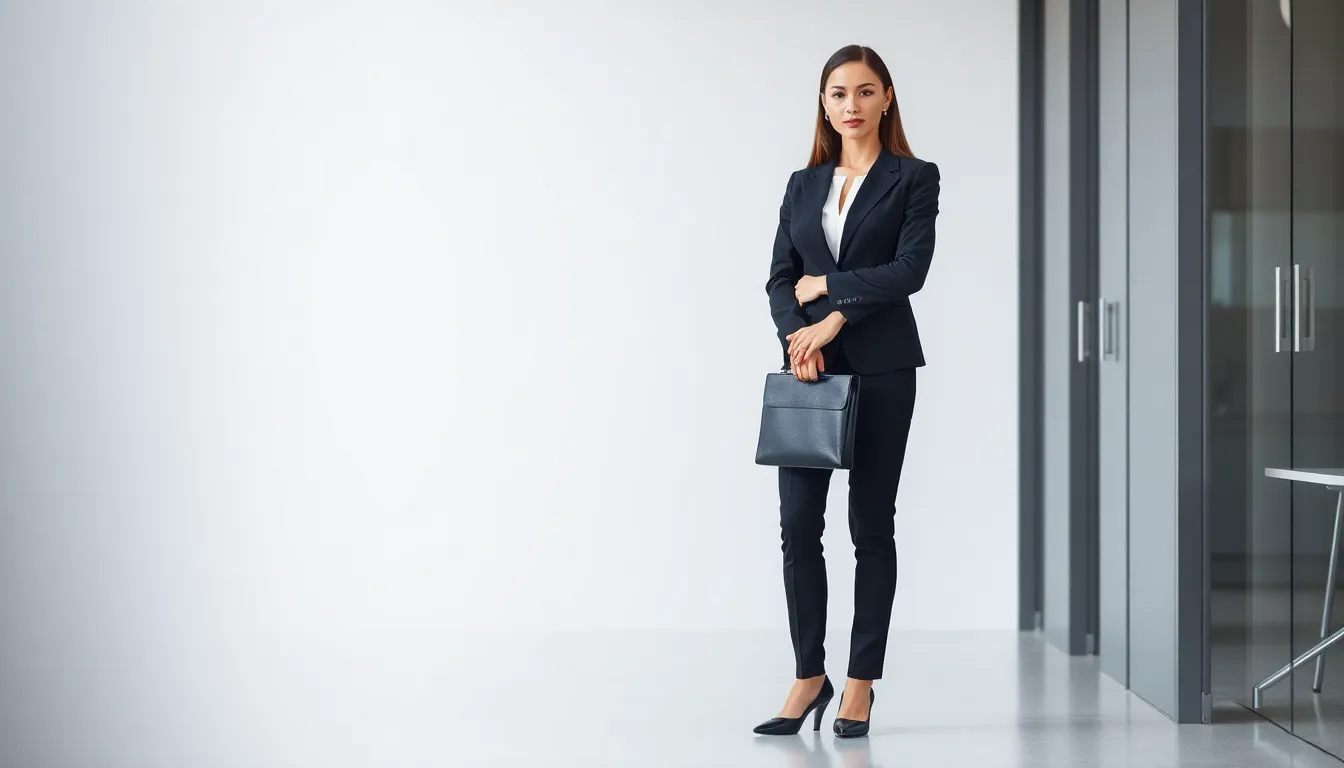
Even the most qualified candidates can undermine their chances with poor clothing choices. We’ll help you navigate the most common interview attire pitfalls that could distract from your professional qualifications.
Steering Clear of Inappropriate Clothing Choices
Revealing clothing tops our list of interview outfit mistakes to avoid. Low-cut tops and short skirts immediately shift focus away from your skills and qualifications. Professional environments expect conservative clothing choices that demonstrate respect for workplace standards.
Loud prints and neon colors create unnecessary distractions during your interview. Graphic tees, bold patterns, and fluorescent shades draw attention to your outfit rather than your responses. Hiring managers should remember your answers, not your wardrobe choices.
Casual summer attire remains inappropriate for most interview settings, regardless of season. Shorts, flip-flops, tank tops, and sandals signal a lack of seriousness about the opportunity. Even summer job interviews require more polished clothing selections.
Sunglasses should only appear in interview settings when medically necessary. Wearing them indoors or during face-to-face conversations creates barriers to genuine connection with interviewers.
Damaged denim sends the wrong message about your attention to detail. Jeans with rips or holes suggest casualness that doesn’t align with professional standards. Choose darker washes without damage if your research indicates jeans are acceptable.
Ensuring Proper Fit and Professional Appearance
Business formal settings require dark-colored suits or customized dresses with matching jackets. Closed-toe shoes like flats, heels, or oxfords complete this professional foundation without drawing excessive attention.
Business casual workplaces allow more flexibility with dress pants or knee-length skirts paired with button-down shirts or blouses. Ties and blazers remain optional but add polish when you want to make a stronger impression.
Casual workplace interviews still demand neat presentation through dark jeans or pants with blouses or polos. Flats or heels maintain professionalism even in relaxed environments.
Skirt and dress lengths should reach knee-length or close to it for appropriate professional appearance. This standard applies across industries and helps maintain focus on your qualifications rather than your outfit choices.
Managing Grooming and Personal Hygiene Details
Makeup application should remain minimal and subtle to complement your overall appearance. Heavy or dramatic makeup can distract interviewers from your responses and professional demeanor.
Jewelry selection needs to stay understated and professional. Distracting pieces shift attention away from your qualifications and can create negative impressions about your workplace judgment.
Facial hair maintenance requires neat trimming and clean lines. Unkempt facial hair suggests poor attention to personal care standards that might extend to work responsibilities.
Fragrance choices should be avoided entirely or kept extremely subtle. Strong colognes, perfumes, and body sprays can overwhelm interviewers in close quarters and create uncomfortable situations.
Professional bags demonstrate better judgment than backpacks for interview settings. Portfolios or structured bags reinforce your serious approach to the opportunity and workplace expectations.
Adapting Your Interview Attire for Different Industries

Different industries have unique expectations for interview attire, and we need to match our clothing choices to these professional standards. Understanding these distinctions helps us project the right image while staying true to our personal style.
Dressing for Creative and Startup Environments
Creative and startup environments typically embrace more relaxed dress codes that encourage individual expression. We can confidently choose professional casual attire like dark jeans or chinos paired with a crisp button-down shirt, blouse, or polo. Women have excellent options in knee-length skirts or conservative dresses complemented by cardigans or blazers.
Footwear choices include clean flats, loafers, or polished closed-toe shoes that maintain professionalism without being overly formal. Jewelry selection allows for slightly more expressive pieces, but we should ensure they look neat and complement our overall appearance rather than distract from our qualifications.
Meeting Expectations in Traditional Corporate Settings
Traditional corporate environments require business formal attire that reflects their established professional standards. Men should invest in dark-colored two-piece suits in navy, black, or gray, paired with collared dress shirts and conservative ties. Women excel in customized two-piece suits with either pants or skirts, or sophisticated dresses with matching blazers.
Neutral solid colors remain the gold standard for these settings, projecting authority and attention to detail. Footwear must be conservative and polished—think oxfords, low heels, or professional flats in coordinating colors. Accessories should stay minimal, with subtle makeup and understated jewelry maintaining our polished, professional appearance.
Adjusting Formality for Healthcare and Education Fields
Healthcare and education sectors generally expect business casual attire, though exact roles and institutions may have varying requirements. We can select dress slacks, khakis, or conservative chinos paired with collared shirts, blouses, or professional sweaters. Blazers and cardigans add sophistication when needed for higher-level positions.
Skirts and dresses work well when they’re knee-length and appropriately conservative for these professional environments. Closed-toe shoes are essential for both safety and professionalism in these fields. Our accessories should remain minimal and tasteful, creating an approachable yet competent appearance that builds trust with potential colleagues and supervisors.
Preparing Your Interview Outfit in Advance

Success in job interviews starts with strategic preparation, and your outfit selection should never be left to the last minute. Research shows that hiring managers form impressions within the first 7 seconds, making advance planning essential for interview success.
Planning and Trying on Outfits Beforehand
Select your complete ensemble at least 24 hours before your interview to avoid last minute stress and ensure everything fits properly. Try on your entire outfit including undergarments, shoes, and accessories to identify any comfort issues or styling problems. Walk around in your chosen shoes to confirm they’re comfortable for extended periods, and check that your clothing allows natural movement without restricting your gestures.
Test different outfit combinations if you’re unsure about your initial choice, taking photos to compare how each look appears. Sit down while wearing your outfit to ensure skirts maintain appropriate length and pants don’t pull uncomfortably. Practice common interview movements like shaking hands, sitting, and standing to guarantee your clothing moves naturally with your body.
Ask trusted friends or family members for honest feedback on your outfit choices, particularly about fit and overall professional appearance. Consider how your outfit looks under different lighting conditions since interview rooms may have various lighting setups. Make final adjustments to hemlines, sleeve lengths, or fit issues while you still have time to address them properly.
Ensuring Clothes Are Clean and Well-Maintained
Freshly launder all garments at least two days before your interview to allow time for proper drying and pressing. Steam or iron your clothing the night before to eliminate wrinkles and create crisp, professional lines that convey attention to detail. Check for any stains, loose threads, or missing buttons that could distract from your professional presentation.
Polish leather shoes until they shine, and inspect them for scuff marks or worn areas that might need touch up work. Clean and organize your accessories including belts, bags, and jewelry to ensure everything appears well maintained and professional. Replace any items that show important wear, as these details communicate your standards and professionalism to potential employers.
Avoid strong fragrances including perfumes, colognes, or heavily scented laundry products that might overwhelm interviewers in close quarters. Hang your outfit properly after pressing to prevent new wrinkles from forming overnight. Double check that all garments smell fresh and clean, as this contributes to the overall impression of professionalism and personal hygiene standards.
Having Backup Options Ready
Pack an extra dress shirt or blouse in your car or nearby location in case of unexpected spills or wardrobe malfunctions during travel. Bring a second pair of professional shoes if your primary choice becomes uncomfortable or gets damaged before the interview. Keep backup hosiery, ties, or other small accessories that could easily tear or become lost during your preparation.
Prepare a professional portfolio or briefcase to carry your documents instead of casual bags or backpacks that might undermine your professional image. Include items like breath mints, tissues, and a small mirror for last minute grooming checks before entering the interview location. Store business cards, extra copies of your resume, and reference materials in organized sections for easy access.
Consider weather contingencies by having appropriate outerwear that complements your professional outfit without overwhelming it. Research the interview location’s parking and entrance situations to prepare for walking distances that might affect your appearance. Plan your route and timing to arrive with enough buffer time for final grooming adjustments without feeling rushed or stressed.
Conclusion
Your interview outfit is a powerful tool that can open doors to new opportunities. When you dress thoughtfully and strategically you’re not just covering your body – you’re communicating your professionalism and respect for the opportunity.
Remember that confidence starts with feeling prepared. Take time to research the company culture plan your outfit in advance and ensure everything fits properly. The right clothing choices will help you feel more confident and allow your qualifications to shine through.
We’ve covered everything from color psychology to industry-exact guidelines to help you make the best impression possible. With these strategies in your toolkit you’re ready to walk into any interview room with confidence and land that dream job.
Frequently Asked Questions
What should I wear to a job interview?
Choose professional attire that matches the company culture. For corporate environments, wear traditional business formal (suits in navy, black, or gray). For business casual settings, opt for dress pants/skirt with a button-down shirt or blouse. Creative industries allow more flexibility but still maintain professionalism with smart-casual combinations.
How important is first impression in job interviews?
First impressions are crucial – hiring managers form opinions within the first 7 seconds of meeting you. Visual cues account for 55% of communication, making your interview attire a powerful tool. Appropriate clothing demonstrates respect for the company and professionalism, significantly influencing hiring decisions.
What colors should I wear to an interview?
Stick to professional neutral tones like navy blue, black, gray, white, beige, and tan. These colors convey trust, reliability, and professionalism. Avoid bright colors, bold patterns, or distracting prints that can shift focus away from your qualifications and skills.
How do I research company dress code before an interview?
Check the company’s website, social media profiles, and employee photos to understand their dress culture. Contact HR or recruiters directly to clarify dress code expectations. Look for visual cues about whether the environment is corporate formal, business casual, or more relaxed.
What are common interview outfit mistakes to avoid?
Avoid revealing clothing, loud prints, overly casual attire, and poor fit. Don’t wear flip-flops, athletic wear, or wrinkled clothes. Skip heavy makeup, excessive jewelry, and strong fragrances. Ensure proper grooming and use professional bags instead of backpacks to maintain a serious, polished appearance.
How should men dress for job interviews?
Men should wear well-fitted suits in navy, black, or charcoal gray with crisp dress shirts and conservative ties. Choose polished leather dress shoes and minimal accessories. Ensure proper grooming, including neat hair and trimmed facial hair. Focus on quality pieces that project professionalism and confidence.
What should women wear to job interviews?
Women can choose professional suit options (pant or skirt suits) in traditional colors, or coordinated separates for business casual environments. Wear conservative blouses or dresses, closed-toe shoes, and carry simple bags in neutral colors. Keep jewelry minimal and makeup understated while maintaining a polished appearance.
How do I prepare my interview outfit in advance?
Plan and try on your complete outfit at least 24 hours before the interview. Ensure clothes are clean, pressed, and well-maintained. Prepare backup options for unexpected situations and consider weather contingencies. This advance preparation reduces stress and enhances your confidence on interview day.
Should interview attire differ by industry?
Yes, different industries have varying dress code expectations. Traditional corporate sectors require business formal attire, while creative industries and startups allow more relaxed, expressive clothing. Healthcare and education typically expect business casual. Research your specific industry’s professional standards to dress appropriately.
How does proper interview attire boost confidence?
Well-dressed candidates experience increased confidence, leading to better posture, stronger eye contact, and improved interview performance. When you feel good about your appearance, you can focus entirely on showcasing your qualifications and skills rather than worrying about your outfit or appearance.
